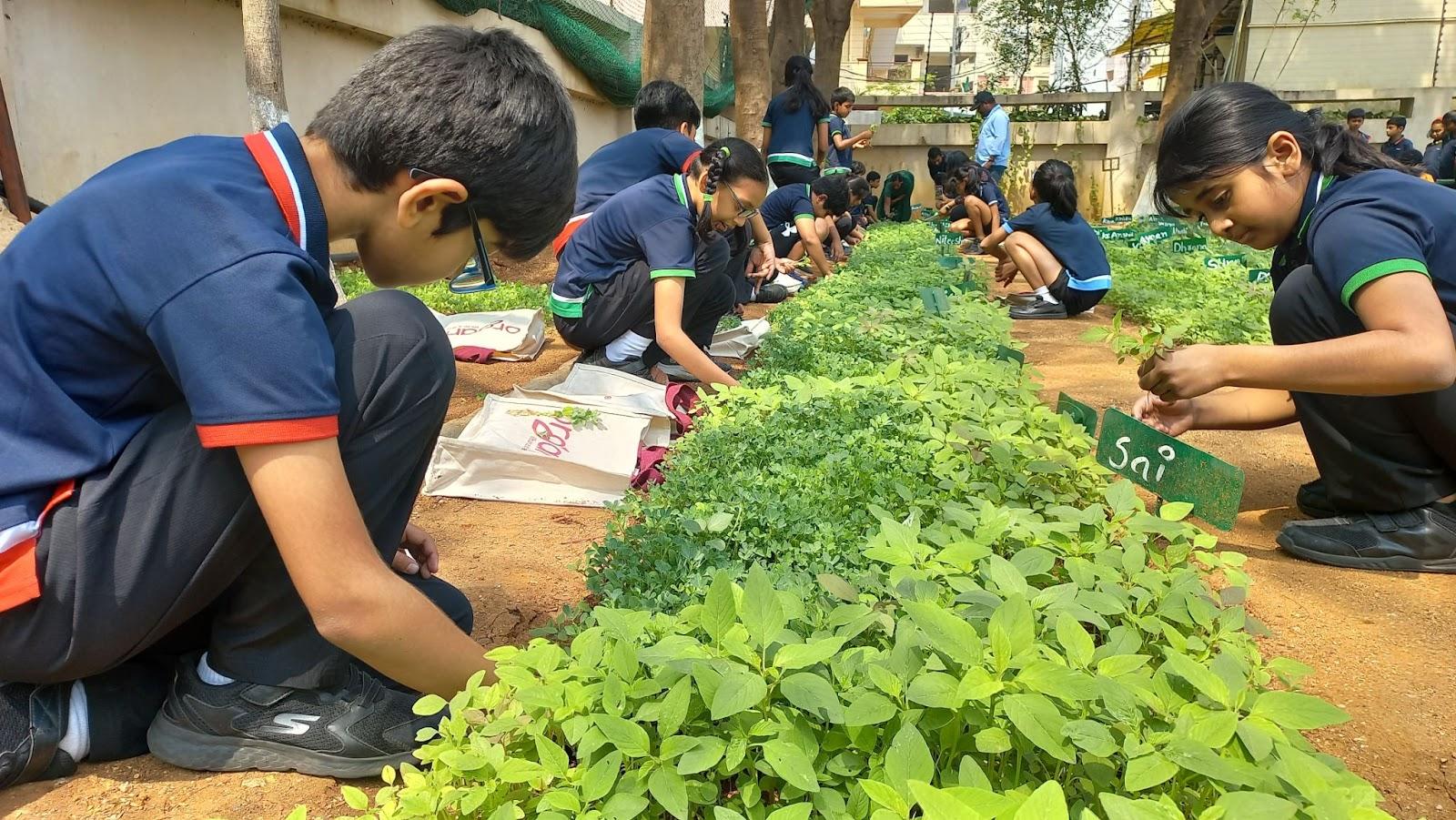How Spaces Grow Green Minds
In a time when children are increasingly disconnected from the natural world, classrooms are being called to do more than teach—they must now heal, inspire, and empower. The traditional model of education often overlooks the role of space itself as a catalyst for transformation. Yet, the physical environment can be a silent mentor, shaping values, behaviors, and lifelong connections to the Earth.
At Organo Et School, we believe that green minds grow best in spaces designed with intention and care. By reimagining learning environments through nature-inspired design, hands-on zones, and sustainability-in-practice, schools can nurture a generation that not only learns about the planet—but learns with it. Through thoughtful collaboration, we support schools in turning classrooms into ecosystems of curiosity, joy, and environmental leadership. This is not just an aesthetic shift—it’s a powerful, practical investment in raising conscious citizens of tomorrow.
At Organo Et School (OES), we believe that every learning space has the potential to become a co-teacher. The way a classroom looks, feels, and flows can spark curiosity, nurture wonder, and lay the foundation for lifelong environmental stewardship. That’s why the first pillar in our STEL (Sustainability Through Experiential Learning) framework is Environment.
As advisors and collaborators with progressive traditional schools, we help reimagine how sustainability can be embedded into everyday learning spaces—not as a subject, but as a way of life.

Nature-Inspired Design
We encourage schools to infuse natural materials and elements into classrooms to create calming, eco-friendly environments that feel alive and grounding.
Wooden Furniture & Bamboo Elements: Replace plastics with tactile, earthy materials.

Indoor Greenery: Set up a windowsill herb garden, a microgreen tray, a small terrarium, or even a balcony garden.

Natural Light: Use large windows to bring in daylight. Supplement with warm lighting that mimics sunlight to create an inviting atmosphere.

These elements don’t just beautify a space—they foster mindfulness, emotional security, and a deeper sense of connection with natural systems.
Hands-On Learning Areas
We help design zones within the classroom that allow children to interact directly with nature and sustainability practices.
Exploration Stations: Include a water play area for conservation games, a gardening zone with soil and seeds, and bins for recycling activities.

Art & Creativity Space: Use eco-friendly and upcycled materials—twigs, shells, cardboard, cloth scraps—for building and expression. This promotes creative thinking while reinforcing reusability.

These areas are places of active learning where environmental ideas are transformed into tangible experiences.
Technology and Interactive Displays
While we advocate for nature-based learning, we also see value in selective, guided technology use that complements discovery.

We recommend limited screen time used intentionally to enhance understanding without overwhelming sensory experiences.
Outdoor Integration
Learning shouldn’t be confined to walls. We support schools in extending their classroom outdoors and into local environments.


Eco Trails or Nature Walks: Create observation trails on or near school grounds for identifying plants, listening to birds, or watching cloud patterns.

These spaces support naturalist intelligence, calm the nervous system, and restore a child's sense of place in the living world.
Flexible, Child-Centered Layouts
Children thrive in spaces that support movement, autonomy, and collaborative play.
Open Flow Layouts: Allow free movement across zones so children can choose their learning journey.

Cozy Reading Corners: Add soft mats, cushions, and a curated shelf of nature-themed books and climate stories.
Group Activity Circles: Create places for storytelling, discussions, and group tasks around environmental themes.

Project-Based Zones: Set aside space for team projects like growing a plant, building a birdhouse, or designing upcycled art.
These spaces encourage decision-making, empathy, and community-building.
Sustainability in Practice
Beyond aesthetics, we advocate for embedding real-life environmental practices into the daily routines of the classroom.
These practices make sustainability tangible, joyful, and habit-forming.
Visual Inspiration and Learning Tools
The environment should also communicate values visually—through wonder, storytelling, and interaction.

These visuals act as silent mentors, reinforcing concepts while keeping anxiety at bay.
Social and Collaborative Spaces
Design spaces that nurture social-emotional learning and collaboration around sustainability themes.

This reinforces the idea that caring for the planet is a shared responsibility, not an individual burden.
Partnering with Schools to Make It Happen
At Organo Et School, our role is not to replace what schools do—it’s to enrich and support it. We collaborate with educators, school leaders, and parents to co-create learning environments that invite environmental stewardship, rather than instruct it.
We bring:

The result is a world that teaches quietly—where kids learn to love the Earth just by being in it.
Apt classroom environments
Every child is born with a natural sense of wonder. When we design classrooms to nurture that spark, we don’t just teach sustainability—we ignite it.
We don’t need to wait for adulthood to grow as environmental leaders.
We can begin now—by shaping the spaces where children learn, grow, and dream.
About Organo Et School (OES)
Organo Et School empowers people to embrace eco-living mindsets, behaviors, and habits. We recognize that for any positive impact to be sustainable, it must be long-term and inter-generational.
Organo Et School is a learning initiative set up by Organo in 2017 and has been facilitating field visits and workshops for Schools and Interest Groups. Organo Et School, an experiential learning initiative by Organo since 2017, has impacted over 8000 students, 2000 adults,1250 community residents, and 500 corporate employees.
Join us on our journey toward sustainable living by subscribing to our channel and following us on Instagram for the latest updates.
Email us at at oes@organo.co.in or call us at 91541 00775
Subscribe to our Youtube channel: https://www.youtube.com/channel/UCVe5InTKtgyGsGgNVNZ5sOw
Follow OES news on our Website: https://www.organoetschool.co.in
Follow OES on Instagram: https://www.instagram.com/organo_et_school/?hl=en